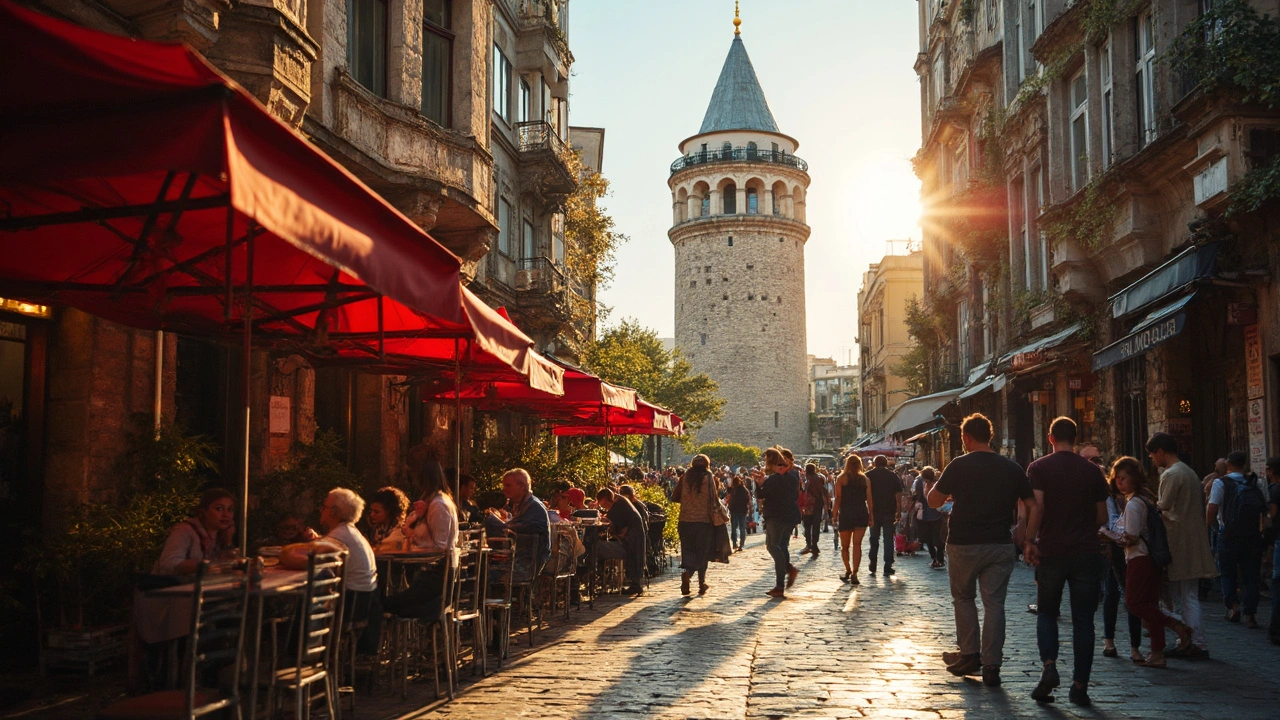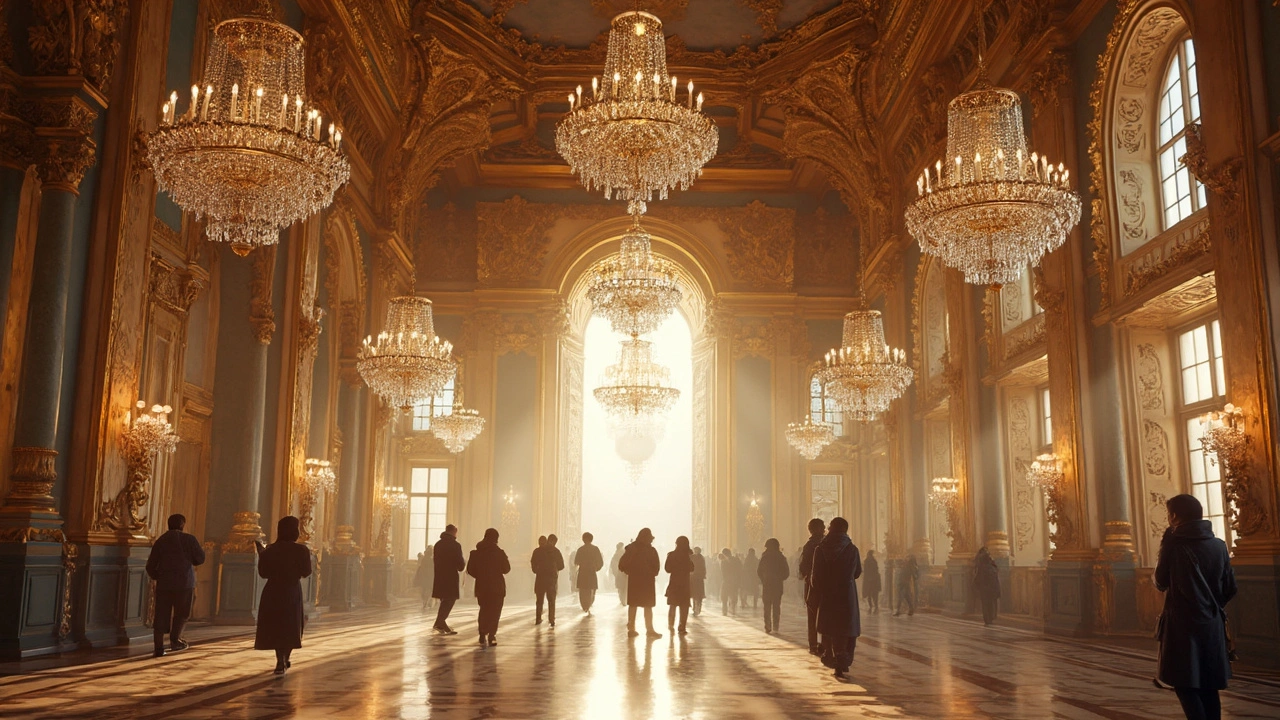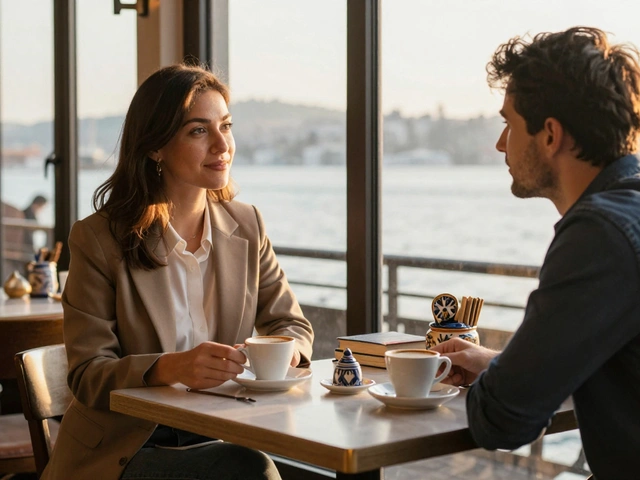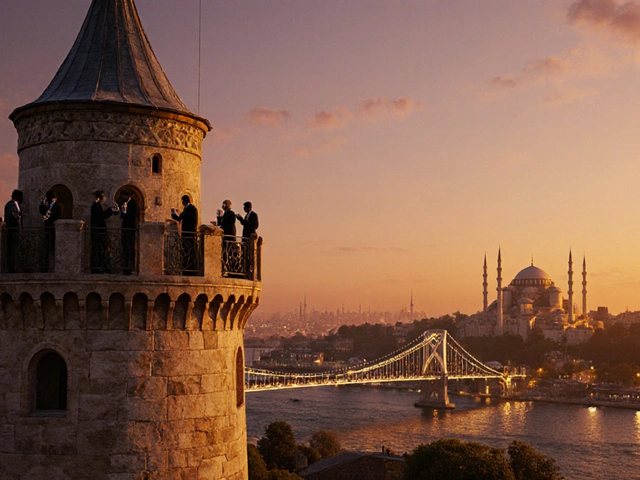Step inside Sultanahmet Square, and the first thing that grabs your attention isn’t the noisy ferries on the Bosphorus or the sweet smell of simit from street vendors. It’s the Blue Mosque, with its six slender minarets and massive dome soaring over old Istanbul. Everyone’s seen it on postcards and Instagram feeds—but what you don’t notice until you’re right there in the heart of the city is how much this building actually tells you about Istanbul’s rhythm, faith, and identity.
The Historical Backdrop: Istanbul’s Changing Skyline
Back when Sultan Ahmet I decided to build the Blue Mosque, Istanbul was already a tangled mosaic of cultures. Hagia Sophia sat just across the square, its massive dome a reminder of Byzantine might. Ahmet wanted a new statement piece—something unmistakable, something Ottoman, something that could outshine what came before. He chose the city’s most bustling spot, right between the old Roman hippodrome and the Topkapi Palace.
Construction started in 1609 and wrapped up in 1616. When architect Sedefkar Mehmed Agha began sketching plans, he was under pressure: not only to impress the sultan but to build something that made every visitor gasp. The mosque’s six minarets stirred controversy—Mecca’s mosque had six, and some thought Ahmet was overreaching. But he pushed through, and the result became part of Istanbul’s DNA. These minarets were not just stone towers; they spoke to Istanbul’s role as a crossroads of empires and faiths.
If you look beyond the structure, even the choice of location is loaded with meaning. Placing the mosque so close to Hagia Sophia was like saying Istanbul wouldn’t erase the past but would crown it with new tradition. For many locals, Sultanahmet is where generations have watched Ramadan lights swing between minarets and where friends gather in the gardens every Eid, soaking up the evening call to prayer that echoes across the Golden Horn.
Design Elements: Why So Much Blue?
To most people living in Istanbul, the ‘Blue’ of the Blue Mosque is probably the first thing non-locals ask about. Walk inside, and it’s clear what the fuss is about: over 20,000 hand-painted Iznik tiles climb the walls and arches, most in jaw-dropping shades of blue, turquoise, and a dozen subtle colors that catch the light differently depending on the time of day. This sea of ceramic flowers and patterns isn’t just decoration—it was chosen to evoke paradise, a recurring theme in Turkish Islamic art.
The main dome stands 43 meters high, held up by four “elephant foot” pillars. That’s not just for show—it gives the interior an unbroken sense of space, a reminder to worshippers of the vastness of the divine. The repeating tulip and carnation motifs are packed with layers of interpretation. Some locals claim the tulip represents Istanbul itself, as the flower has deep roots in Turkish culture: just think of the city’s annual tulip festival, when the parks explode in color. For centuries, artisans have hidden calligraphic verses from the Quran in their designs, layering meaning over meaning so that even regular visitors spot something new each time.
The lower interior drips with hand-painted blue tiles, but at night, lamps once filled with olive oil cast a golden glow, leaving visitors wondering if the space was sky or earth. Today, LED lighting has taken over, but if you visit on a quiet evening, you’ll notice how the shadows and soft light still make the patterns flicker like moving water. For architecture fans, the Blue Mosque marks a turning point: it’s the last great imperial mosque built in Istanbul’s classical Ottoman style before Baroque and Western influences crept in.
| Feature | Details |
|---|---|
| Main Dome Height | 43 meters |
| Number of Minarets | 6 |
| Number of Tiles | Over 20,000 |
| Year Completed | 1616 |
| Pillars Supporting Dome | 4 |
If you’re planning a visit, head there right after Fajr (the dawn prayer) when light streams in from 260 windows, and you can have the echoing cavern almost to yourself. It’s one thing tourists forget: the mosque is still a living, breathing place of worship as much as an attraction. Respecting quiet prayer times isn’t just good manners—it lets you see the building in its true spirit.
Layers of Meaning: Spiritual Symbols and Civic Power
Nothing in the Blue Mosque’s design is accidental. The six minarets? That’s not just an aesthetic flourish. In Ottoman religious architecture, most imperial mosques have four. Sultan Ahmet wanted his mosque to make a clear statement—that his reign, and Istanbul’s position at the heart of the Muslim world, deserved a place on par with Mecca. After complaints, legend says, the Ottomans built a seventh minaret for the Grand Mosque in Mecca to settle the rivalry. That small tweak in history is still debated in cafés across Sultanahmet—and is one of Istanbul’s favorite tales to share with visitors.
The mosque’s main prayer hall is deliberately vast, designed so voices echo faintly. The acoustics mean you can hear the imam’s recitation from almost any corner, binding the experience together. Even the courtyard follows deep symbolic logic. The fountain in the center isn’t only for ablutions; it suggests spiritual cleansing before entering the sacred, a ritual repeated daily by locals and visitors alike.
Istanbulites will tell you to look up: the inscriptions written high along the arches aren’t just decorative Quranic verses. They proclaim the legitimacy of the Ottoman dynasty and connect the mosque’s builders to a long line of sultans and saints. For many, the motifs and patterns are reminders that life in Istanbul is always about balance—old and new, east and west, faith and daily life. That symbolism isn’t lost on locals or the millions who visit every year.
During holy months, the mosque stages traditional mahya lights—strings of illuminated text between minarets spelling out blessings in Ottoman script. If you’re lucky enough to see one in Ramadan, take a moment to watch as families linger on the square, children spellbound. No glossy travel guide from any Istanbul attraction can quite capture that simple community magic.
Living Culture: The Blue Mosque’s Place in Modern Istanbul
For someone living in Istanbul right now, the Blue Mosque isn’t a relic—it’s part of the everyday skyline. Residents use it as a landmark when giving directions: “Turn left after the Sultanahmet Camii, then follow the tram line to Gülhane Park.” Tourists and locals spill out from the mosque’s shadow into the markets, filling their arms with Turkish delight from local brands like Hafiz Mustafa or eyeing handmade ceramics in the Arasta Bazaar just behind the mosque.
Fridays and major holidays see the gardens around the mosque come alive, with families spreading out for picnics and vendors hawking sesame-studded simit or steaming glasses of çay. School groups dart in and out, teachers sharing stories about sultans and lost treasures. The mosque itself sometimes hosts visiting dignitaries or scholars, reaffirming its place at the center of civic life—not just Istanbul’s, but Turkey’s.
Restoration works over the years—such as the major projects completed in 2023 and again in early 2025—have kept the tiles vibrant and the calligraphy crisp. If you’re keen to visit, Istanbul’s city information kiosks (they’re the blue booths near the square) offer multilingual guides, and there’s a digital app supported by the municipal government that provides a self-guided tour complete with rare archival images. These local services help everyone—whether lifelong Istanbul residents or curious travelers—to get a richer view beyond what a regular guidebook offers.
One practical tip: visiting midweek, late morning or right after Asr (afternoon prayer) offers the quietest chance for reflection. The mosque is open to all outside of prayer times, but check for local events or Friday prayers, when hundreds of worshippers can fill every corner. Respect observances—scarves for women, covered legs for both sexes—and you’ll find staff politely guiding everyone, keeping the Blue Mosque as welcoming as it’s always been.
The Blue Mosque is more than just an icon on the Istanbul skyline. It’s a living, layered story—one told not just in stone and tile, but in every daily ritual, prayer, and stroll through Sultanahmet Square. Every time you walk by, you pick up a little more of its meaning, and a bit more of what makes this city tick.













10 Comments
I've always been fascinated by the Blue Mosque, but diving into the symbolism really adds a whole new layer of appreciation. It's not just about the staggering beauty of the architecture but how every design choice has meaning — from the number of minarets to the intricate tile work.
It’s like a living piece of history that tells stories of faith, empire, and artistry all at once. I think understanding these hidden meanings creates a bridge between cultures, making it easier to appreciate the spirit of Istanbul beyond just a tourist’s snapshots.
Has anyone else here been captivated by the way traditional craftsmanship meets spiritual symbolism in this mosque? It's an impressive example of how art and religion blend to shape a city’s identity.
Bro, the Blue Mosque is a masterpiece that’s insane! The energy inside is just vibrant and full of colors that tell stories, you know? The tiles alone create this explosion of blues and greens that hypnotize you.
I love how the mosque stands tall yet humble, symbolizing harmony in diversity — which is so relevant today! Have you dug into the meaning behind the six minarets? Legend has it it was controversial at first because it equaled the mosque in Mecca!
It's like standing right at the heart of history and culture, wrapped in spiritual power and stunning artistry. Istanbul nailed it with this jewel!
This post beautifully highlights what makes the Blue Mosque not only an architectural icon but a spiritual haven for many. The way the design uses natural light to create a serene atmosphere is so moving. It feels like you’re meant to pause and reflect when you’re inside.
I think the mosque’s role in the community goes deeper than tourism — it’s an active place of worship that connects locals with their heritage and faith. That continuity makes it timeless and precious.
Respecting such sites helps us understand cultural nuances more deeply, and I really appreciate articles like this that unpack the significance beyond the facade.
Okay, let’s just get this straight—if you think the Blue Mosque is just some pretty old building, you’re missing the entire point, seriously. This architectural wonder is a complex symphony of design elements that shout cultural importance louder than any modern skyscraper!
The domes are perfectly proportioned, the calligraphy beyond exquisite, and don’t pass over the meticulous tile work that anyone with an eye for detail will admire for hours. Honestly, the sheer audacity of building six minarets back in the day? Groundbreaking. No pun intended.
So next time you visit, gear up for a mind-blowing experience that’s as educational as it is breathtaking, because this place is not just historic, it’s an embodiment of artistry and symbolism that demands your attention.
From a philosophical perspective, the Blue Mosque encapsulates the essence of transcendence and human aspiration. The design reflects a deliberate harmony intended to elevate visitors’ minds towards contemplation and spiritual awareness.
Every curve and tile serves as a metaphor for unity and the infinite. The mosque doesn’t just stand as a physical monument but as a testament to the intersection of faith, culture, and artistic expression. It reminds us that architecture can serve as a bridge between the divine and the temporal.
Such symbols are vital, as they encapsulate shared values and inspire collective identity. Exploring these meanings offers profound lessons on the power of cultural artifacts in shaping human experience.
Honestly, reading this and seeing how everyone is gushing about the Blue Mosque kind of reminds me how we romanticize old sites without questioning what they really represent. Fascinating as the architecture is, let’s not forget the complicated history and the power dynamics tied to such monuments.
Isn’t it a bit convenient sometimes to focus only on the beauty and obscure the often contested narratives behind it? It’s worth acknowledging that while the Blue Mosque is indeed a cultural icon, it also embodies histories of empire and control that affected countless lives.
So yeah, admire the art but keep a critical eye peeled, folks.
Ah yes, the Blue Mosque — mankind’s grand effort to plaster blue tiles everywhere and call it spiritual depth. As if a bunch of ceramic patterns alone could offset architectural ostentation. Honestly, it’s a tourist trap hiding behind claims of ‘symbolism’ and ‘timeless roles.’
But hey, if mesmerizing crowds with six minarets and endless domes is the pinnacle of spiritual experience for some, who am I to argue? Just don’t tell me that light filtering through stained glass automatically means enlightenment.
Sometimes, a blue motif is just a blue motif. But sure, let’s all marvel and pretend it’s deeper than that.
Meh, it’s just a big building with lots of tiles. I mean, sure, the history's neat and all, but I never got why everyone’s so hyped about the symbolism. Like, what does any of that really do?
Maybe I’m too blunt, but sometimes I think we make mountains out of molehills to sound smarter about old stuff.
Can’t deny it’s a nice spot to visit though, I guess.
This post really captures the essence of what makes the Blue Mosque so special—its blend of extraordinary design and spiritual symbolism living in perfect harmony. Having visited it myself, I can attest the sense of peace and reverence it inspires is truly unique.
It’s fascinating how the mosque remains not just a relic, but a vibrant part of religious life and community identity in Istanbul. When you walk through those grand arches and gaze up at the cascading domes, it’s impossible not to feel connected to centuries of tradition.
For anyone interested in culture or architecture, understanding its symbolism enriches the experience immensely. Definitely a must-see for travelers who yearn for depth beyond the surface.
Can we just take a moment to obsess over the Blue Mosque's dramatic flair? I mean, everything about it screams grandeur and sophistication, like it’s the star of Istanbul’s architectural fashion show!
From the endless arrays of intricate blue tiles to the perfectly poised minarets piercing the skyline, it’s basically the ultimate diva of religious landmarks. And don’t get me started on how the light filters through the stained-glass windows—pure theatrical magic!
If you haven’t felt your heart skip a beat walking into this masterpiece, are you even experiencing culture properly? Honestly, it’s the kind of place that demands a standing ovation.